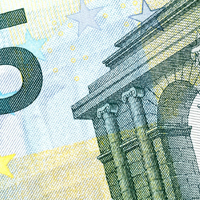The impact of negative interest rates
01-08-2016 | Lionel Pavey |

Articles in the press state that large commercial banks are considering charging their corporate clients negative interest rates on credit balances on their bank accounts. This presents us with certain problems – how will clients react?
Withdraw money – known as stuffing money under the mattress. This would present huge security issues on where the money could be safely kept, potential theft etc. Holding cash would give a return equal to zero, which would be greater than depositing it at a bank.
Hoarding – by withdrawing money from the banking system, banks themselves would have less money to lend and would force them to reduce their balance sheets. Conversely the idea would be that people would spend more money rather than save and, therefore, boost the economy. Would it work? We are seeing negative yields on high quality government bonds, for a variety of reasons, yet it appears that negative rates have not boosted spending or investment. The loosening of monetary policy does not appear to have removed market fears.
Disintermediation – banks fulfill a role as intermediar/middleman in the supply chain of finance. If money is withdrawn from the banking system it would be even harder for banks to provide finance to lenders. How could lenders then obtain the funding they require? Virtual marketplaces could be envisaged but there are so many security and safeguard issues that would need to be addressed before this could take place. Most companies can not borrow from capital markets – they rely on banks to provide their funding. Reductions in government bond yields to below zero do not lead to more funding being given to companies.
Worst case scenarios – companies will invest in technologies that are capital intensive leading, eventually, to a fall in the demand for labour. Pensioners who are dependent on interest income will be forced to reduce their consumption leading to a fall in demand. With safe yields being negative the search for yield could lead investors into riskier assets than they would normally consider.
A stamp on physical cash – this is an idea more than 100 years old proposed by Gesell to stop hoarding of cash. Bank notes would need to receive a stamp every month to be considered valid cash. These stamps would have to be purchased (a form of negative interest) and their purpose would be to erode the principle that money is a store of value and could be better used by being actively invested in the economy.
This all sounds very pessimistic, but there are potential gains from negative interest rates for companies.
It would encourage companies to pay their creditors more quickly and, in the process, receive discounts on their purchases outstanding if they pay early. Furthermore it would enable companies to truly examine their whole supply chain across all departments within a company and create a better understanding of the workflow processes concerning cash receipts and disbursements.
For those who like a more rogue approach, you could actually overpay your creditors and ask for a credit note. Now your creditor is funding your negative interest rate and if true economic theory principles are maintained – a fall in prices should follow negative interest rates – then, not only you would have handed over your negative interest rate exposure but you would also benefit from falling prices in the future on the outstanding credit notes with your creditors allowing you to make a relative saving on the future purchase price.
It is clear that steering interest rates will not sort out the economy – other steps outside of monetary policy will have to be taken to restore faith in the economy. But which steps will that be?

Cash Management and Treasury Specialist









